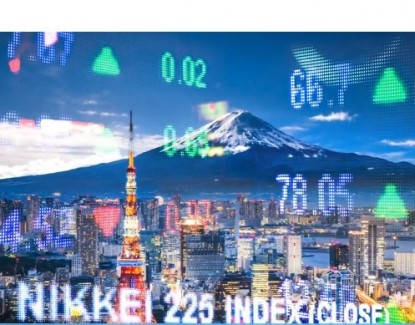Market Commentary and Fund Performance
Masa Takeda of Tokyo-based SPARX Asset Management Co., Ltd., sub-advisor to the Hennessy Japan Fund, shares his insights on the Japanese market and Fund performance.
-
 Masakazu Takeda, CFA, CMAPortfolio Manager
Masakazu Takeda, CFA, CMAPortfolio Manager
Performance data quoted represents past performance; past performance does not guarantee future results. The investment return and principal value of an investment will fluctuate so that an investor’s shares, when redeemed, may be worth more or less than their original cost. Current performance of the fund may be lower or higher than the performance quoted. Performance data current to the most recent month end, and standardized performance can be obtained by viewing the fact sheet or by clicking here.
Fund Performance Review
In September 2024, the TOPIX increased 0.23% from the end of the previous month. In early September, concerns over a slowdown in the U.S. economy affected market sentiment due to the ISM manufacturing index and U.S. jobs data fall below expectations. Furthermore, the Japanese yen continued to strengthen due to expectations of a rate cut by the U.S. Federal Open Market Committee (FOMC) and rising expectations of a rate hike by the Bank of Japan (BOJ). Amid such circumstances, the stock market temporarily declined, despite showing signs of recovery. Nevertheless, investors remained cautious, as stock prices seemed to be stagnant. Later in the month, after the FOMC decided to cut interest rates by 0.5%, Federal Reserve Chairman Jerome Powell indicated that he would not rush to ease monetary policy, and the BOJ maintained its current monetary policy, which helped to halt the appreciation of the yen and led to a rebound in export-related and semiconductor-related stocks. On the 26th and 27th, the situation looked like Sanae Takaichi seemed to win as leader of the Liberal Democratic Party (LDP), and the prospect of monetary easing being resumed increased, so the stock market rose sharply over these two days. However, Shigeru Ishiba ended up winning the leadership election, and due to increasing a sense of caution on economic policy and the uncertainty over the short term, the Japanese stock market was nearly flat for the month.
In September, the Fund returned 0.30% (HJPNX), the same as its reference index, the Russell/Nomura Total Market™ Index, which returned 0.30%.
The month’s positive performers among the Global Industry Classification Standard (GICS) sectors included shares of Industrials, Consumer Staples, and Consumer Discretionary while Information Technology, Financials, and Materials detracted from the Fund’s performance.
Among the best performers were our investments in Hitachi, Ltd., one of Japan’s oldest electric equipment & heavy industrial machinery manufacturers, Seven & i Holdings Co., Ltd., a Japanese diversified retail group and operator of Seven-Eleven convenience stores and Daikin Industries, Ltd., the leading global manufacturer of commercial-use air conditioners. As for the laggards, ORIX Corporation, Japan’s largest non-bank comprehensive financial services company, Renesas Electronics Corporation, Japan’s largest semiconductor maker specializing in MCUs and analog chips and Shin-Etsu Chemical Co.,Ltd., Japan’s largest chemical company.
For any actively managed equity funds, the portfolio must be differentiated. This is because an active fund competes not only with other active funds but also with passive ones. By “differentiated,” we mean that the holdings and their weightings in the fund are different from those of the index it is competing against.
In our view, the portfolio of the Fund can be uniquely characterized as follows:
1. It is a concentrated portfolio with a limited number of stocks.
2. It invests with a long-term investment, horizon holding onto the same stocks for an extended period.
3. The Fund invests in what we believe to be “growth stocks in disguise.”
4. It predominantly seeks Japanese-listed global companies, particularly international blue chips, rather than domestically oriented businesses.
1) It is a concentrated portfolio with a limited number of stocks.
Generally, a differentiated portfolio is expected to have unique stocks. For example, it might include lesser-known small-cap stocks that are not in the index. Another approach is to have significantly large allocations to large-cap stocks that are also part of the index. We follow the latter approach.
To be sure, the number of stocks in a portfolio does not directly correlate with the degree of differentiation. In other words, a portfolio consisting of a large number of stocks does not necessarily mean it is not differentiated. What’s important is the difference in the allocation of each stock compared to the index. Theoretically, even a fund that holds 100-200 stocks could have a completely different construct from the index if the top 10 stocks make up, say, 90% of the total fund assets.

Our approach involves investing heavily in just a handful of large-cap stocks with occasional investments in small-caps, all of which we believe have the potential to become Japan’s future corporate superstars. We carefully select stocks and often allocate a larger amount to each than the Russell/Nomura Total MarketTM Index does, which limits the total number of holdings. Historically, the number of stocks in the Fund has generally remained around 30. The main reason for concentrating on a limited number of high-conviction stocks comes from our belief that it is the most effective way to maximize returns while reducing risk. We do not subscribe to the effectiveness of diversification through a large number of stocks as often taught in academic investment courses.
The more a portfolio invests across a wide range of stocks, the more likely it is to follow the overall stock market in a downturn. While owning many stocks can help smooth out fluctuations in individual stock prices to match the market average, it cannot eliminate the risk of an overall market decline. On the other hand, if you choose the right names in your concentrated portfolio, your portfolio may buck the trend in a falling stock market.
Also, according to Modern Portfolio Theory, if the handful of stocks you invest in is highly diversified, the diversification effect can be sufficiently achieved even with just ten stocks, as has been empirically proven. Adding more stocks beyond this hardly brings additional diversification benefits and may cause the portfolio return to converge to the market average. Especially in portfolios focused on stocks with large market capitalizations, if the number of stocks is too large, the performance will likely become indistinguishable from the index return, and after taking management fees into account, the return may fall behind passive funds. This is the structural problem often mentioned in discussions about the active fund industry.
We firmly believe that by owning stocks of businesses with different characteristics, we can effectively reduce investment risk.
Another reason why we prefer to invest in only a few stocks is that we have been a long-term sceptic about the Japanese economy due to a structurally declining population. As such, we find only a handful of candidates worthy of investing that meet our criteria. The Japanese stock market has a slow turnover of listed companies, with a relatively large number of old, mature, slow-growth companies, many of which lack growth ambition (until recently).
We believe such an investment strategy can work as long as there are high-conviction investment ideas. Conversely, we will not maintain a concentrated portfolio just for the sake of having one. If the conviction levels are low, there should naturally be more stocks in the portfolio (unless going all cash is permitted). Therefore, there may be times in the future when the number of holdings temporarily increases.
Currently, the active share of the Fund is in the mid-70s (the higher the number, the more differentiated it is from the Tokyo Stock Price Index). In the 2010s, the active share was around 90%, showing a declining trend in recent years. This is just a result of our bottom-up stock picking, putting money where we feel there are the best opportunities. Nevertheless, the behavior of our portfolio is still meaningfully different from the overall stock market, and we believe it is a sufficiently differentiated portfolio.1
It’s also important to understand that even with a high active share, it does not always result in differentiated returns. Even if the portfolio is significantly different from the index, if the group of stocks in the portfolio has the same price movements as the broader index, the performance will be the same as the market average return. In other words, a high active share is only a “necessary condition” for differentiated returns, but not a “sufficient condition.” Crucially, no matter how you set up your portfolio to be differentiated, the effort will be futile if it does not lead to excess returns. Therefore, making the right stock selection is paramount.2
2) It invests with a long-term investment horizon holding onto the same stocks for an extended period.
Our investment style tends to avoid frequently switching portfolio holdings in an attempt to outperform the index. Instead, we focus on the long-term growth of the intrinsic value inherent in a company’s business. Therefore, realizing our desired investment returns may require holding onto investments over the long term until our view is proven.
The stock market is considered efficient in the sense that, over the long term, stock price reflects a company’s intrinsic value. By analyzing companies and investing in them, we could enjoy the increase in intrinsic value and its compounding effect as company profits grow year after year. On the other hand, sometimes, we might have to patiently wait for the stock market to correct its undervaluation of the intrinsic value, leading to an eventual rise in the stock price.
However, in the short term, stock prices can move erroneously and erratically. The frequent fluctuations in stock prices are related to the fact that humans often struggle to make economically rational decisions. For example, humans prefer realized profits over unrealized ones. This preference can lead to a tendency to sell for profit before long-term holding becomes viable. Also, when stock prices drop significantly, people tend to panic and sell. At other times, worries about missing out on opportunities can lead to buying at high prices. Long-term investing is easier said than done.
Numerous studies show that an effective investment strategy is to sit tight and hold your investments patiently. According to a study by JP Morgan Asset Management, if you had held onto a U.S. index fund (S&P 500) for 20 years (about 4,400 trading days) until May of this year, your annual return would have been 10.2%. However, missing the top 10 days of the biggest price increases would have nearly halved your annual return to 6.0%. Missing the top 30 days would have reduced your annual return to 1.2%.3 Stocks do not consistently rise or fall every day. Rather, the majority of long-term performance is determined on specific days that occur randomly. It is extremely difficult to predict these days in advance and allocate funds accordingly. Therefore, the key to investment success should be to consistently stay invested in the stock market.
3) The Fund invests in what we believe to be “growth stocks in disguise.”
Generally, growth stocks are defined as stocks with a high price to earnings ratio (P/E) or price to book ratio (P/B) due to expected high-profit growth. Conversely, “value stocks” are companies whose stock prices are considered cheap relative to their profit growth potential and owned assets, often having a P/E or P/B lower than the market average. The former typically includes innovative companies in sectors such as tech and internet that are expected to see rapid profit growth, while the latter often encompasses mature companies in traditional industries with limited profit growth potential.
However, we define growth stocks slightly differently. We consider any companies with a profit growth rate exceeding the global nominal gross domestic product (GDP) growth rate to be a growth stock. This means that not only double-digit growers but also those with mid-single-digit growth rates can be considered solid growth stocks. Here, we do not focus on the level of P/E or P/B relative to the market average.
This means that sometimes companies regarded by the market as “value stocks” are considered to be growth stocks. Mitsubishi Corporation, which the Fund has been owning since the late 2000s, is a case in point. Recent additions to our portfolio, such as the three major insurance groups, ORIX and MUFG, also fall into this category. Although their past profit growth rates of mid-single digits may seem lacklustre compared to the annual growth of over 10% achieved by our typical growth stocks like Keyence and Fast Retailing, their track records comfortably exceed the nominal GDP growth rate.
We believe that these “growth stocks in disguise” offer the significant appeal of sustainable shareholder returns at a rate not found in typical growth stocks. The high dividend yield, brought about by continuous dividend hikes, is a return attributable to shareholders. Additionally, if the company repurchases its shares (and cancels them), the earnings per share will increase by the amount of the reduction in outstanding shares, making it an important source of return as well. Therefore, even if earnings growth rates are in the mid-single digits when you add the high dividend yields and additional earnings per share (EPS) growth from share buybacks, the total expected returns are often higher.4 This is comparable to typical growth stocks, which see limited impact from share buybacks and dividend yield due to their high valuations.
Another attraction of these low P/E and low P/B stocks is it may be easier to find a margin of safety, which can mitigate the downside risk of stock prices. Generally, high P/E and high P/B stocks that depend on expected future high growth are difficult to quantify in terms of the risk of stock price declines when expectations are not met. This is because it is hard to find quantitative support levels such as net asset value, high dividend yield, or a below-average P/E. Especially, high P/E stocks based on high-profit growth expectations can experience a significant de-rating from lofty levels and result in a stock price decline far more severe than the profit decline, even if a profit miss is marginal. Thus, high P/E stocks should receive large weightings in the portfolio only when you have a high degree of confidence in the long-term outlook. In contrast, low P/E and low P/B stocks should have a lower risk of large declines as long as there are no serious issues with their financial performance because their market expectations are low.
In addition, stocks with low P/E and low P/B are, by definition, priced at low levels relative to their dividends and share repurchases. As such, even with a similar dividend payout ratio to typical growth stocks of 20-30%, the dividend yield tends to be higher. Similarly, the impact of share buybacks is also greater. Especially if share buybacks are conducted when P/B is less than 1,5 the per-share book value increases. Therefore, if other conditions remain constant, the stock’s valuation becomes even more attractive in our view.
The Fund’s investment in MUFG is based on the attractiveness of the business as an individual company, as well as on expectations of the future domestic interest rates. However, even if the outlook for rates does not unfold as expected, it is anticipated that shareholders may still be rewarded with a high total cash return due to the company’s commitment to a 40% dividend payout ratio and share buybacks, providing a good margin of safety. Such “growth stocks in disguise” are appealing to us.
4) It predominantly invests in Japanese-listed global companies, particularly international blue chips, rather than domestically oriented businesses.
Since the inception of our strategy, we have focused solely on Japanese companies that operate globally, rather than those that rely on domestic demand in Japan. We believe this focus is a distinguishing characteristic of the Fund. The lack of investment in domestically driven companies reflects our bearish view on the long-term outlook for the Japanese economy, one of the reasons being the structural population decline amid falling birthrates and an ageing society.
Thankfully, the short to medium-term prospects for the Japanese economy and stock market have improved considerably in recent years. The key catalyst was the corporate governance reforms spearheaded by the government since around 2014. The shift in management attitudes of Japanese companies as a whole, which have finally started to focus on capital efficiency, is extremely important. On the economic front, the signs of sustainable inflation and normalization of interest rates add to optimism underpinned by nationwide wage hike movements, robust inbound tourism, and inbound foreign direct investments helped by Japan’s geopolitical neutrality.
Nevertheless, we continue to favor blue-chip global players as the long-term demographic headwinds remain unchanged. As such, we hope to reap the benefits of Japan’s improved investment landscape through these international businesses currently held in the Fund. These companies originally honed their competitiveness and built their track record in their home market of Japan before expanding overseas. As many of these companies continue to hold the number one market share domestically, we are confident they will benefit more from the improving domestic economic conditions than lower-tier players.
Investment risks specific to our strategy
Finally, we would like to reiterate the risks of investing in our strategy. Firstly, regardless of how carefully we conduct the research and make stock selections, there is always a risk of unforeseen circumstances in a concentrated portfolio that could lead to a drawdown. Specifically, this can include unexpected scandals such as corporate misconduct or collateral damage caused by an exceptional event.
To the extent possible, we make investment decisions that take into account risks by stress-testing the portfolio companies. For example, we consider whether a company has a strong financial foundation that can withstand an unanticipated crisis and whether there are successors prepared to continue the growth trajectory in the event something happens to the president.
However, even with various risk scenario analyses, it is not possible to prevent all risks. We have encountered situations where the stock prices of various companies in the portfolio have crashed. Given the concentrated nature of our portfolio, we would (at least temporarily) face a meaningful drawdown. Interestingly though, since the inception of our strategy, the portfolio has registered lower standard deviations than the index. This is somewhat counter-intuitive, but we attribute it to our rigorous stock selection discipline.
As Benjamin Graham famously said, “In the long run, the stock market is a weighing machine.” However, what is not well understood is that this “long run” exceeds the time frame acceptable to the average market participant, which is why investing is so challenging for most people.
Understanding this, while unlikely, even if the stock price of a company we own continues to decline for several months or even years, we will persistently hold or even increase holdings at the expense of short-term returns as long as we judge that the market’s view is incorrect, and the long-term outlook remains bright. Therefore, if the performance of the Fund remained “sluggish” for an extended period we would remain committed to employing this approach despite this. These shortcomings could be seen as short-term, and there is evidence our strategy has achieved a degree of success in our investing career. Crucially, this is the most important point we would like the Fund investors to fully understand.
Click here for a full listing of Holdings.
- In this article:
- Japan
- Japan Fund
1 Generally, an active share below 60% indicates the active fund is essentially a closet indexer, meaning it is not much different from the index, and is not considered a true active fund.
2 In theory, an extremely low active share portfolio can outperform the index by actively trading positions, but it is easier said than done, in our view.
You might also like
-
 Portfolio Perspective
Portfolio Perspective
Japan FundJapan’s Evolving Investment Landscape in 2025
 Masakazu Takeda, CFA, CMAPortfolio Manager
Masakazu Takeda, CFA, CMAPortfolio Manager Angus Lee, CFAPortfolio Manager
Angus Lee, CFAPortfolio Manager Kohei MatsuiPortfolio ManagerRead the Commentary
Kohei MatsuiPortfolio ManagerRead the CommentaryIn the following commentary, the Hennessy Japan Fund Portfolio Managers summarized what most surprised them in 2024 about the Japanese market along with positive trends driving Japanese companies.
-
 Investment Idea
Investment IdeaCompelling Valuations in Japan
 Masakazu Takeda, CFA, CMAPortfolio Manager
Masakazu Takeda, CFA, CMAPortfolio Manager Tadahiro Fujimura, CFA, CMAPortfolio Manager
Tadahiro Fujimura, CFA, CMAPortfolio Manager Takenari Okumura, CMAPortfolio ManagerRead the Investment Idea
Takenari Okumura, CMAPortfolio ManagerRead the Investment IdeaJapanese equities are currently trading at compelling valuation levels compared to other developed equity markets around the world and relative to their own historical averages. We believe the Japanese market deserves a closer look.
-
 Investment Idea
Investment IdeaWhy Active Matters When Investing in Japan
 Masakazu Takeda, CFA, CMAPortfolio Manager
Masakazu Takeda, CFA, CMAPortfolio Manager Angus Lee, CFAPortfolio Manager
Angus Lee, CFAPortfolio Manager Kohei MatsuiPortfolio Manager
Kohei MatsuiPortfolio Manager Tadahiro Fujimura, CFA, CMAPortfolio Manager
Tadahiro Fujimura, CFA, CMAPortfolio Manager Takenari Okumura, CMAPortfolio ManagerRead the Investment Idea
Takenari Okumura, CMAPortfolio ManagerRead the Investment IdeaWhen investing in Japanese businesses, we believe it is imperative to select a manager who is immersed in the culture and can perform in-depth, company-specific research to build a concentrated portfolio of Japanese companies that can outperform a benchmark and weather volatility.
